Verdi's La traviata: a complete guide
Gramophone
Tuesday, October 4, 2016
Mike Ashman looks into the opera's genesis, Renée Fleming reflects on the role of Violetta, plus a guide to the key recordings
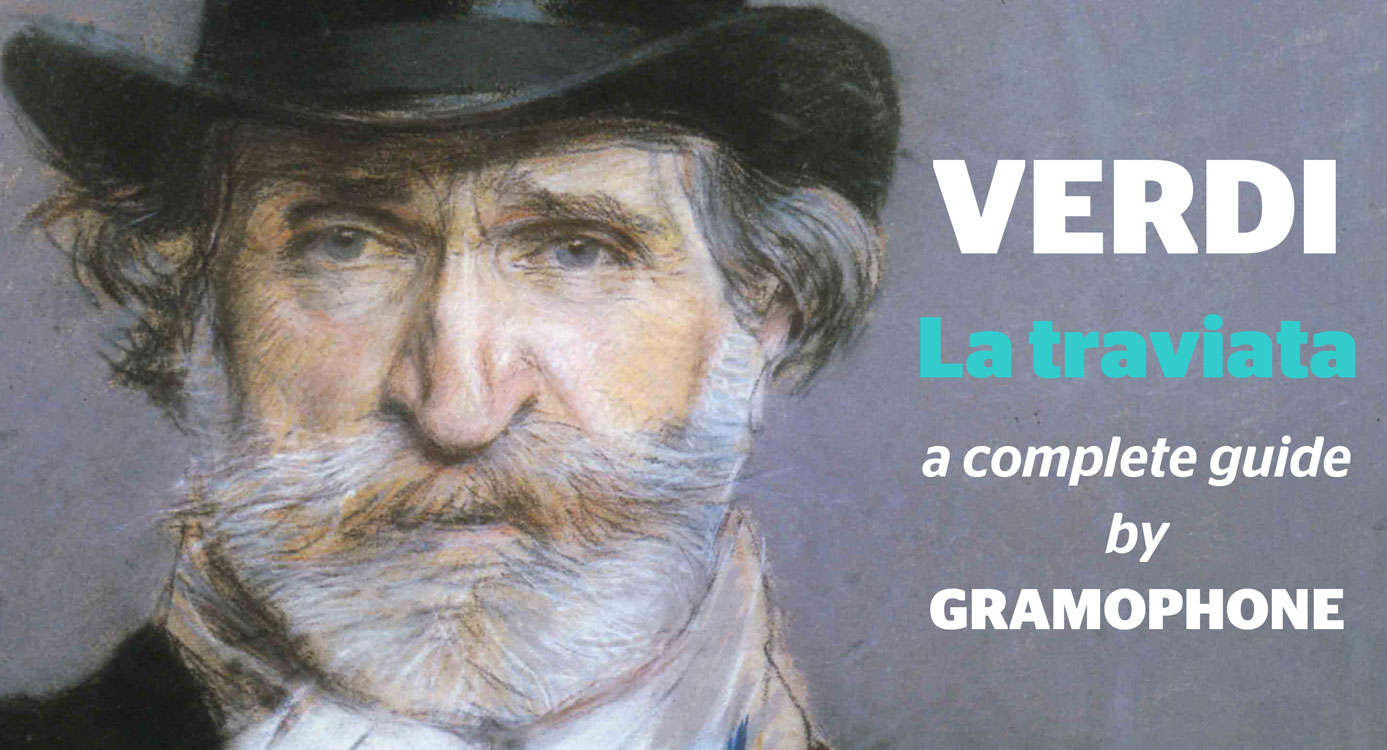
The creation of La traviata, by Mike Ashman
With Macbeth, Verdi scored a success with a setting of a classic English tragedy (rather than the French or Spanish potboilers habitually loved by contemporary Italian opera) that by no means stuck to the musical and structural rules that Bellini/Donizetti/Rossini had carved out. Despite using a corrupt edition, the composer managed – by a kind of intuitive musical genius – to shape his opera into something very near to the spirit of Shakespeare’s original. And, as a result of his frequent interventions into Francesco Piave’s creation of the libretto, he had become a sophisticated creator of dramatic situations and sequences.
All these experiences shaped the next period of Verdi’s writing (1847-53), which coincided with an explosion of activity in his personal and professional life. He met his life’s companionn in the singer Giuseppina Strepponi, who also translated the original plays on which he based Il trovatore and Simon Boccanegra and, in a gesture of first love akin to Wagner’s coded exchanges with Mathilde Wesendonk in the score of Die Walküre, helped him copy new music for Jérusalem (the French I Lombardi). Strepponi was also at one with her partner politically, both of them eagerly supporting the anti-Austrian Risorgimento uprisings of 1848. It was also in this period that Verdi’s ‘anni di galera’ (galley years, as he termed his own prentice years as a composer) took an international turn with commissions both in Paris and (for I masnadieri starring Jenny Lind) in London.
Although Verdi, like his contemporary Wagner, often liked to mix experiment with consolidation in choosing successive opera projects, the period leading up to La traviata saw him regularly pushing boundaries. He commissioned a libretto for a (never completed) Re Lear whose vocal distribution would ignore wholly the traditional primo and secundo divisions of Italian casting. The two further Piave librettos that began the 1850s for him both took on risky subjects: Stiffelio told of a Protestant pastor who forgives his unfaithful wife from the pulpit; Rigoletto (premiered at Venice’s La Fenice in March 1851) showed a named historical French king – the censors made him an anonymous Italian duke – getting clean away with the rape of his hunchback jester’s daughter, the most cynical portrait possible of misused power. The latter work’s stretching of the transitions between solo and ensemble writing, its use of three father–daughter duets to link the action and its employment of the male chorus as vocal wind machine were innovatory. Rossini said that Rigoletto made him recognise Verdi’s genius for the first time.
Subscribing to Gramophone is easy, you can choose how you want to enjoy each new issue (our beautifully produced printed magazine or the digital edition, or both) and also whether you would like access to our complete digital archive (stretching back to our very first issue in April 1923) and unparalleled Reviews Database, covering 50,000 albums and written by leading experts in their field.
To find the perfect subscription for you, simply visit: gramophone.co.uk/subscribe
If the ensuing Il trovatore seemed a more conventional Tannhäuser to Rigoletto’s Der fliegende Holländer its action sequencing consisted of what another age would call ‘jump cuts’ – a radical enough contrast to the musical form of French Grand Opera it appeared to imitate. But this was the case only when Verdi, in his role of self-dramaturge, had restored to Cammarano’s text the more extreme dramatic coups that this establishment librettist had cut out. At pretty much the same time (another departure for the composer) in 1852/53, Verdi was working with Piave on a new project for Venice, an opera that he said needed a ‘donna di prima forza’. But this project (still unknown) was abandoned as soon as he and Giuseppina had seen La dame aux camélias, the play by Alexandre Dumas fils, in Paris. A thinly disguised autobiography of Dumas’s affair with the tubercular courtesan Marie Duplessis, it was hailed by Verdi as ‘a subject for our time! Others wouldn’t have attempted it for the costumes, the period and a thousand other silly scruples. But I’m doing it with the greatest of pleasure.’
Many of Verdi’s operas deal with the conflict between public and private life: which comes first – duty or emotion, head or heart? In Il trovatore, set during an earlier Spanish civil war, Manrico has to decide whether to indulge his love for the ‘enemy’ Leonora or to carry out the vendetta demanded by his supposed mother Azucena. By contrast, the person who has to make this choice in La traviata is a woman: there are no wars, and the ‘battlefield’ is a social one. But it is no less a scene of conflict – and one made even more real by virtue of this being the only opera by Verdi set in ‘contemporary times’ (the mid-19th century) and his only work based on a true life story. Violetta Valéry (as Verdi/Piave named Dumas’s Marguérite) is a paid, dancing puppet on a string, watched constantly by a gossiping and vicious society (nowhere more so than in the ‘street’ chorus heard from the window of her Act 3 deathbed, a clever expansion of the Rigoletto storm). Already in danger of becoming yesterday’s news because of the fatal illness slowly killing her, Violetta makes the mistake of falling in love with Alfredo. But society forbade a relationship between a ‘fallen’ or ‘wayward’ woman (the rough meaning in English of the term la traviata) and a young man of good, middle-class breeding with a socially conscious father (Giorgio Germont).
Even in relatively liberal Venice the censors would not allow Verdi his preferred title of Amore e morte (‘love and death’) or allow the opera to be played in modern costume (prostitution and disease were permissable on stage only if embalmed in the past). It had to take place ‘c1700’, a detail that didn’t worry Verdi enough to correct in later life. He was also happy enough with the singing of an apparently stout prima donna (Fanny Salvini-Donatelli), although the first audiences were less than convinced by her dying of consumption. Felice Varesi, a colleague of the composer since his creation of the title-roles in both Macbeth and Rigoletto, was unimpressed enough by his aria ‘Di Provenza’ to write to a newspaper complaining that Verdi had not known how to write for the singers he had. Precise, unbiased reports of a first night that Verdi judged to be ‘a fiasco’ seem not to exist. Generally the first act, with its vocal fireworks at the close for Violetta (‘Sempre libera’) and dramatic off-stage interruption by Alfredo, was well received; the first part of Act 2 (with the duet in which Germont père persuades Violetta to renounce his son) was adequately received; and the bleak third act (basically, Violetta dying) was too unshowily ‘real’, or ‘veristic’, for the Carnival public.
Privately, Verdi blamed the singers and withdrew the opera for some musical revisions to Giorgio Germont’s part and to await a better cast. A year later he tried again, still in Venice but at the Teatro Gallo rather than La Fenice. Piave took charge of the stage production and Verdi’s ‘poor sinner’ (his own phrase) began her journey towards a world popularity that has rarely diminished. Appearing only halfway through the century, and basing itself on a play that was no masterpiece, Verdi’s theatrical sketch of the half-sordid, half-magnificent life of bourgeois Paris at play – paralleling the novels of Flaubert, and Zola’s to come – anticipated the future verismo of his countrymen.
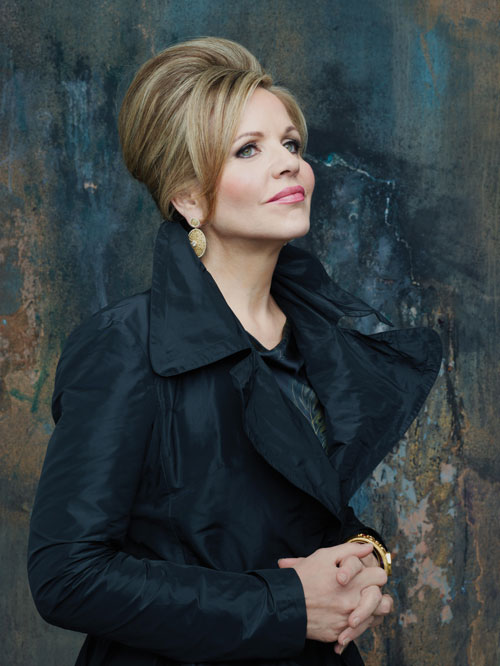
Renée Fleming on La traviata
I started out as a singer of Mozart – I didn’t have a natural facility for some of the more coloratura roles that you find in Verdi. I’ve since sung lots of individual arias from Verdi’s operas, but not many complete roles. Had I begun singing Verdi earlier, Il trovatore would have been an interesting choice, as would Don Carlos. I would have liked to do Falstaff, too – it’s incredible. But my opera repertoire has been quite focused. I first sang Otello in 1994 and Simon Boccanegra in 1995. On a dramatic level, Verdi is in his absolute master phase in Otello, and it’s perfect for me to sing. In Boccanegra, Verdi is musically on an amazing level – there is lots of beautiful writing, but my favourite section is the recognition scene.
La traviata is closer to the bel canto tradition and Violetta is the most grateful of Verdi’s soprano roles. The audience loves her, for even though she’s a courtesan she does the right thing, whereas everyone else is self-interested. When it comes to helping Alfredo’s family, she does it even though she has to renounce the man she loves. I was supposed to sing the role at the Met in 1999 but I cancelled because I didn’t feel ready. I eventually did it in Houston in 2003 – the timing just seemed right. For me, it was about having a facility at the top of my voice and being able to sustain it. Some people’s voices get lower with time but luckily mine hasn’t, it’s stayed pretty much where it’s always been. There’s also such an incredible tradition of the most significant sopranos singing the role that it was important for me that I felt I had something to say, interpretatively speaking. And of course, everyone knows that the role of Violetta is appropriate for three different kinds of soprano – the first act is for the coloratura soprano, the second is the easiest to sing, and the third is for the lyric soprano – so it’s a challenge! She’s on stage the whole time and steals the show.
To sing Violetta, I researched the role of courtesans in the 19th century. I first became interested in this because I spent so much time in Paris, where Marie Duplessis’s grave is. Duplessis was the real-life lover of Alexandre Dumas fils, who wrote La dame aux camélias, on which La traviata is based; the title-character Marguérite Gautier – Violetta in the opera – is based on Duplessis. These women were powerbrokers in a way: they were smart, they moved in the most interesting circles, they had freedom, and if they were clever they saved money so they could survive after their beauty left them. Unfortunately, there was no understanding of what tuberculosis or other infectious diseases were so they often didn’t survive. Duplessis was sold into society by her father and yet she spoke several languages, studied piano and must have been a very talented, cultivated person. My imagination was spurred on by all these stories.
With Verdi, even his histrionic writing for Violetta has a purpose. There’s always a dramatic reason for the coloratura, it’s not just virtuosity for virtuosity’s sake. In Act 1, for example, the writing gives an underlying sense of her hysteria – she’s between a rock and a hard place, she wants love but she can never have it. She feels so much confusion and it’s all there in the music. I also think the vocal writing in Act 1 is indicative of Violetta’s illness – there’s a panting quality to it, as if the illness and falling in love have together caused her this breathlessness. The real difficulty for me, though, is the Act 1 aria ‘Sempre libera’. It’s just not natural for my voice, so it’s a case of taking a deep breath before I go on stage and hoping I can get away with it.
The duet in Act 2 with Germont is the heart and soul of the opera. This is the point when Violetta decides to give up Alfredo, and she turns to his father in a beautiful soft voice, singing, ‘Just tell your daughter that the sacrifice was made for her’. But my favourite Verdi device is the falling, chromatic duple rhythm that’s everywhere in this opera. It’s one of his most often-used motifs and it works perfectly here as a symbol of Violetta’s suffering.
I don’t sing Violetta anymore – I dropped the role a year ago. I sang it in many, many places and felt that I had really said everything I needed to say. But I’m so glad that I did it.
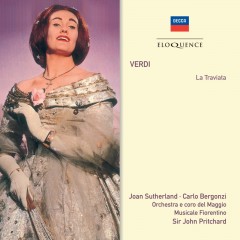
La traviata – a recording history, by Mike Ashman
The statistics alone tell a story. Before the end of 2007, no less than 100 versions of La traviata had been issued on CD (and 25 on DVD), and an online source that lists all recordings it can trace (even pirates of recent radio and TV broadcasts) was counting well over 250.
It began in 1912 (in French) on Pathé, with Émile Archaimbaud leading Jane Morlet’s Violetta and the Gaîté-Lyrique orchestra. There were many cuts, which became a habit (or tradition) of La traviata recordings until 1962 when Sutherland, Bergonzi and Merrill did the whole score for Decca under John Pritchard, an important achievement made less exciting by Sutherland’s neutrality with the text (Decca Eloquence 480 6039). By that time, recording this opera had long become a matter of ‘cherchez la diva’, something predicted by Verdi’s ironic comments about the fascination of the role he’d created. As Violetta is the show’s main motor we’ll go with that obsession here, without forgetting the importance of the conductor.
Of the six Maria Callas versions, don’t miss the two Carlo Maria Giulini ones from La Scala (EMI 966858-2, Myto MCD00210, 1955/56), or the Franco Ghione (with Alfredo Krauss’s Alfredo) from Lisbon (Myto MCD00147). This is not ‘beautiful’ singing. I know colleagues who adore Callas’s Lady Macbeth but just can’t take the almost Sprechgesang colourings, inflections and pauses in her La traviata (‘Dite alla giovine’ is always a special moment).
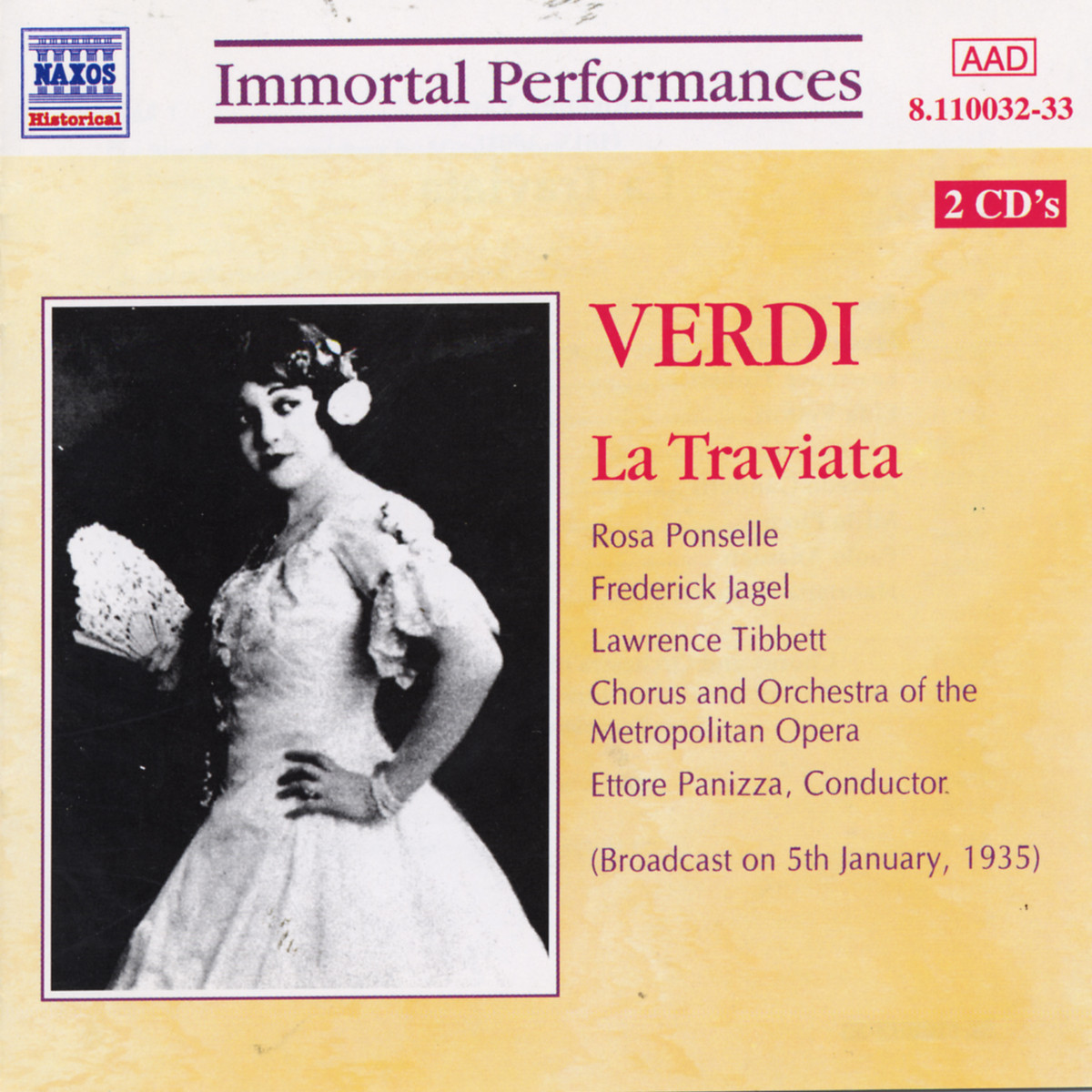
From a generation before, the fabled Rosa Ponselle brings any amount of expressive detail – non-fans call it ‘mannerism’ – to a ‘live’ 1935 Met Opera performance under Ettore Panizza (Naxos 8 110032/3). The Argentinian Panizza, more than assistant to Toscanini, conducts the piece so grippingly that another New York broadcast with Jarmila Novotná (Walhall WLCD0343) – and including Lawrence Tibbett’s supremely acted Germont – should be heard.
Arturo Toscanini himself injects more neurotic tension than anyone – listen to the Prelude: this Violetta is already dead – but the cast (Opus Kura OPK7044/5) fall short of vocal heaven.
James Levine conducts Teresa Stratas (a complete acting assumption) alongside Domingo’s thorough Alfredo in Zeffirelli’s garish film (DG 073 4364). The two Riccardo Muti performances (with a slightly ageing Scotto, EMI 319280-2; and ‘live’ at La Scala – Fabbricini, Sony 88697 58142-2) might serve as what BBC Radio 3 used to call ‘the library choice’ – solid recording and performance, musicologically respectable. But more exciting are two divas of today who’ve made something of a speciality of Violetta – Angela Gheorghiu (her 1994 London debut with Georg Solti, Decca 448 1192) and Anna Netrebko (DG 477 5933; DG DVD 073 4189). The best Violettas? Novotná, Callas and Netrebko.
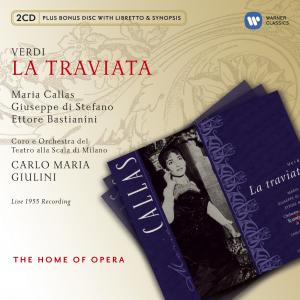
Essential recording
La traviata
Callas; Di Stefano; Bastianini; Chorus and Orchestra of La Scala, Milan / Carlo Maria Giulini
(Warner Classics)
Thank you for visiting...
We have been writing about classical music for our dedicated and knowledgeable readers since 1923 and we would love you to join them.
To find the perfect subscription for you, simply visit: gramophone.co.uk/subscribe











